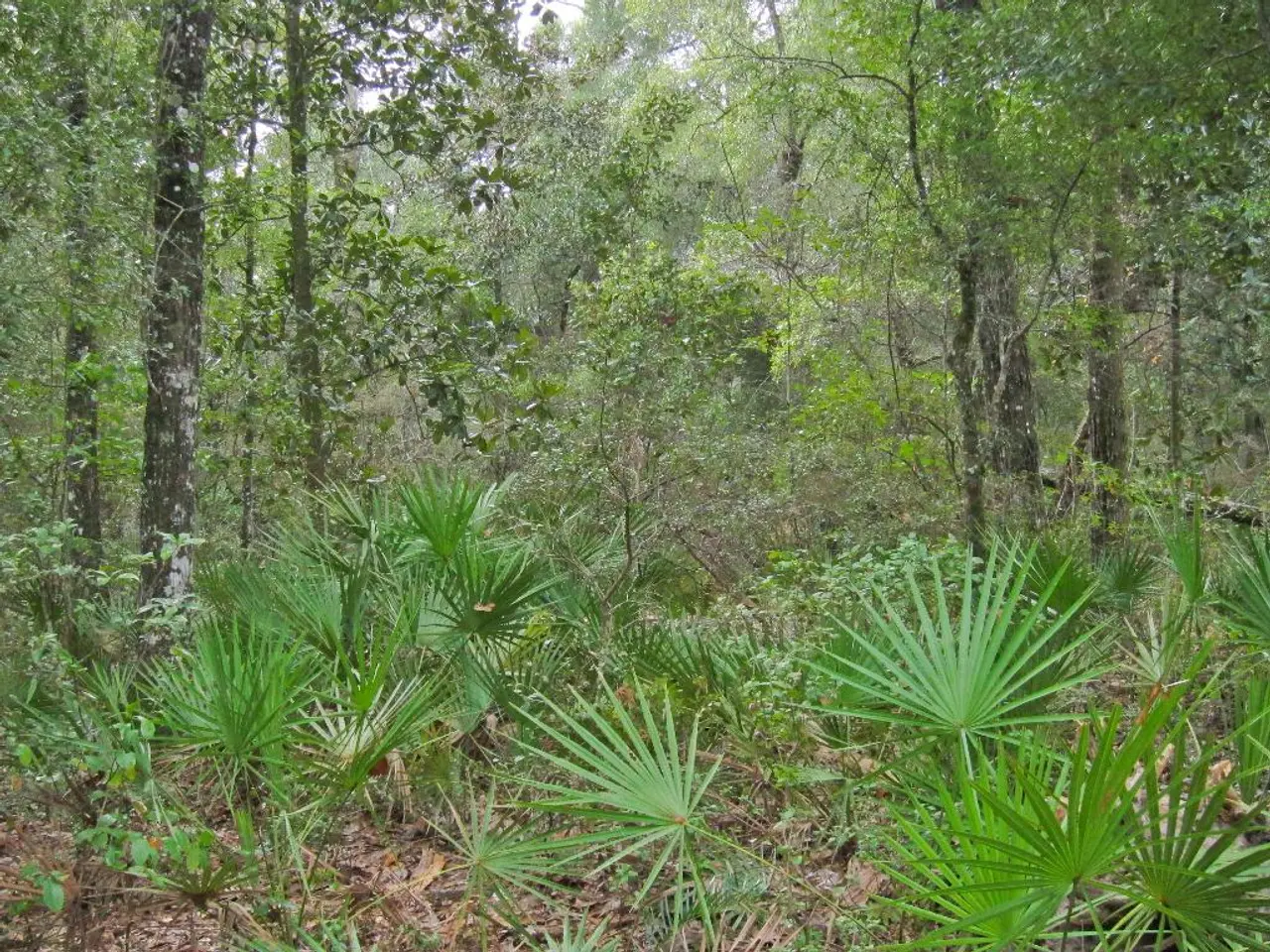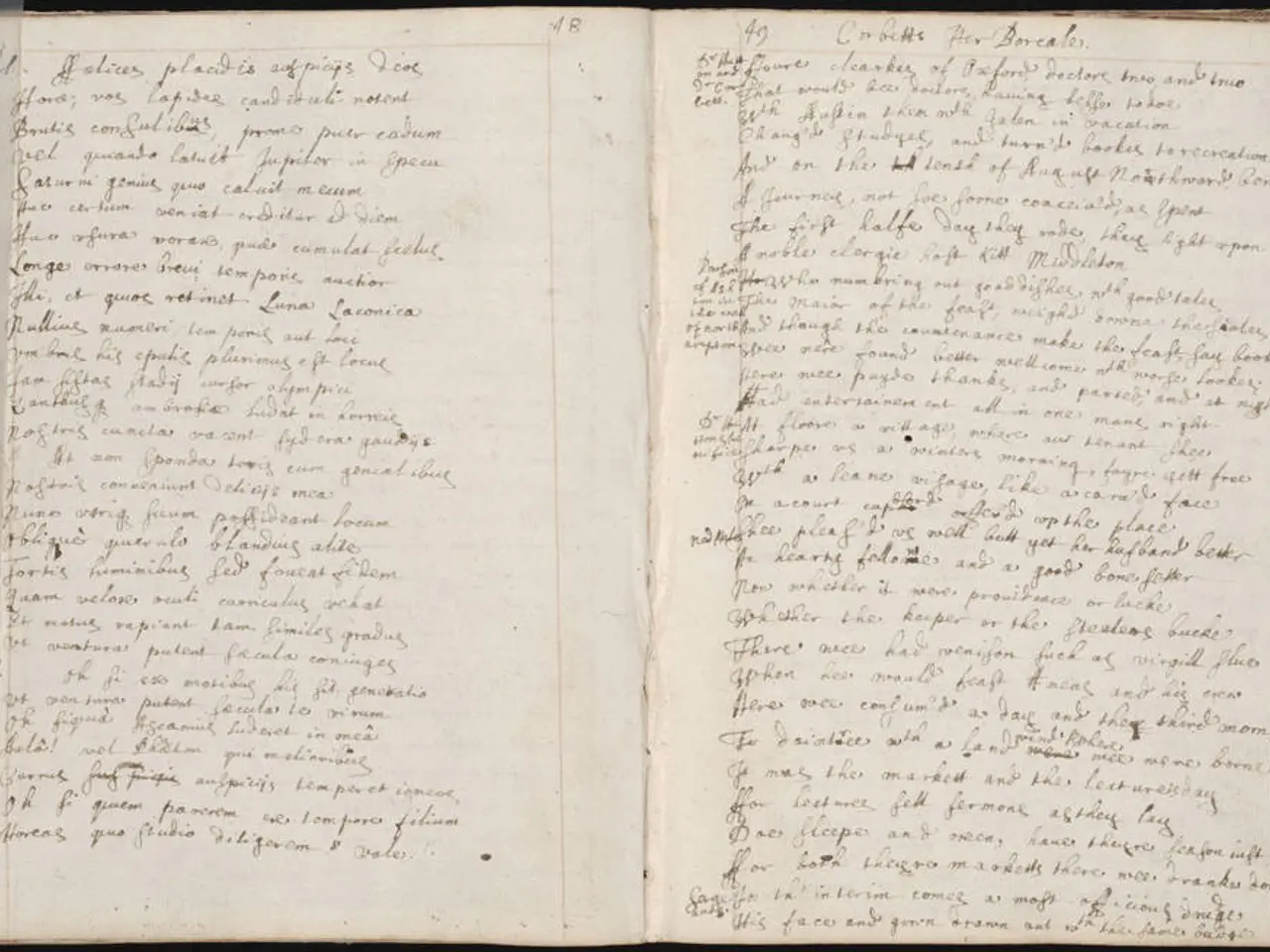Fig trees convert CO2 into limestone, potentially paving the way for a novel carbon sequestration approach.
In a groundbreaking discovery, a team of researchers, led by Dominik Hochwarth, Editor at VDI Verlag, has shed light on a natural mechanism that could revolutionise our approach to carbon sequestration. The focus of their study is the oxalate-carbonate cycle, a process that allows certain fig tree species to convert atmospheric carbon into inorganic carbonate minerals in the soil.
The process begins with fig trees, among other species, fixing carbon dioxide (CO₂) through photosynthesis, producing organic compounds including calcium oxalate crystals within their tissues. When parts of the tree decay, these calcium oxalate crystals are broken down by specialized bacteria or fungi present in the soil. This microbial activity converts the calcium oxalate into calcium carbonate (CaCO₃), which precipitates as a mineral, essentially "locking" the carbon into a stable, rock-like form in the soil.
This calcium carbonate mineral form of carbon has a much longer residence time in the soil compared to organic carbon, which typically decomposes faster and releases CO₂ back into the atmosphere. The process also raises soil pH and can enhance nutrient availability, potentially benefiting soil health and plant growth around the trees.
The study, which focused on three fig tree species that grow in the dry north of Kenya, reveals that the tree species Ficus wakefieldii showed the highest conversion rate of CO₂ to calcium carbonate. The researchers plan to test the suitability of Ficus wakefieldii for agroforestry, considering factors like CO₂ binding, water demand, and fruit yield.
The oxalate-carbonate cycle could provide new impulses for agroforestry, combining agricultural yields with climate protection. The researchers see potential in the targeted use of the oxalate-carbonate cycle in agroforestry to enhance carbon sequestration efforts.
Dr. Mike Rowley of the University of Zurich, who led the study, states that the potential for carbon sequestration through the oxalate-carbonate cycle has not been fully recognized. The stored carbon remains in the soil significantly longer than usual due to the formation of calcium carbonate, making it a more durable form of carbon sequestration that supplements the traditional storage of carbon in biomass through photosynthesis.
The first tree in which the CO₂ storage mechanism was proven was Milicia excelsa, also known as the Iroko tree, which can store up to one ton of calcium carbonate in the soil. Calcium carbonate remains stable for centuries, unlike organic carbon which often only persists in the soil for decades.
The team's next goal is to analyze the environmental conditions under which CO₂ binding is particularly efficient. They believe that understanding these factors could lead to the identification of other tree species with similar abilities, potentially expanding the reach of this promising method for carbon sequestration.
- The Editor at VDI Verlag, Dominik Hochwarth, led a study focused on the oxalate-carbonate cycle in fig trees, which is a significant process for health-and-wellness as it converts atmospheric carbon into inorganic carbonate minerals in the soil.
- The research reveals that Ficus wakefieldii, a fig tree species that grows in the dry north of Kenya, shows the highest rate of converting CO₂ to calcium carbonate, making it a potential candidate for the environmental-science field in agroforestry.
- The team plans to analyze environmental conditions for CO₂ binding efficiency, with the aim of identifying other tree species with similar abilities, broadening the possibilities for the fitness-and-exercise industry in combatting climate-change through carbon sequestration.




